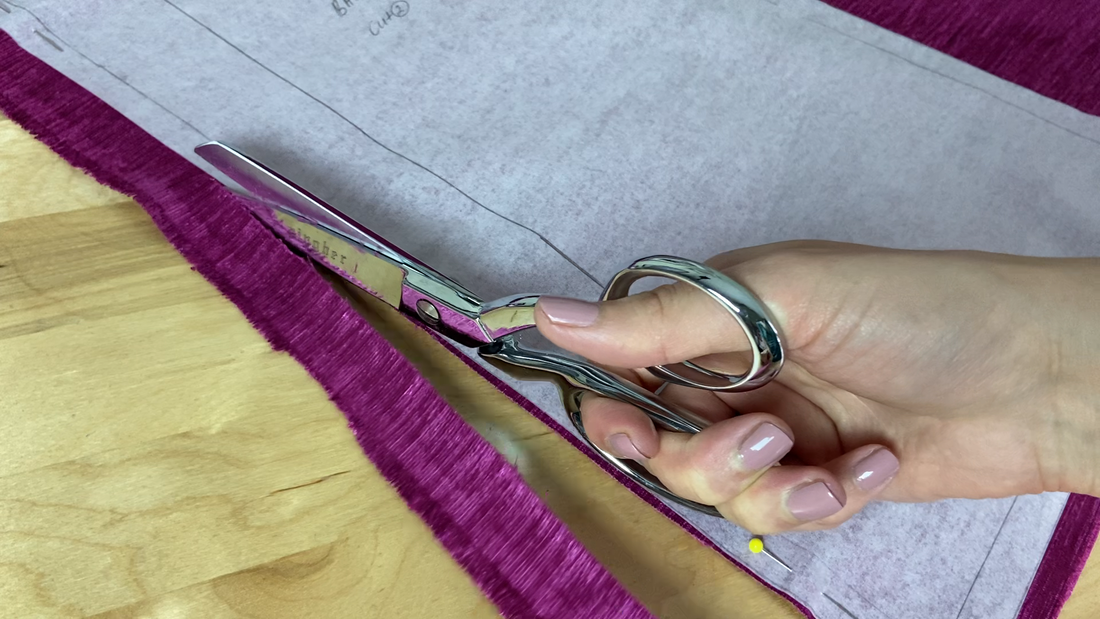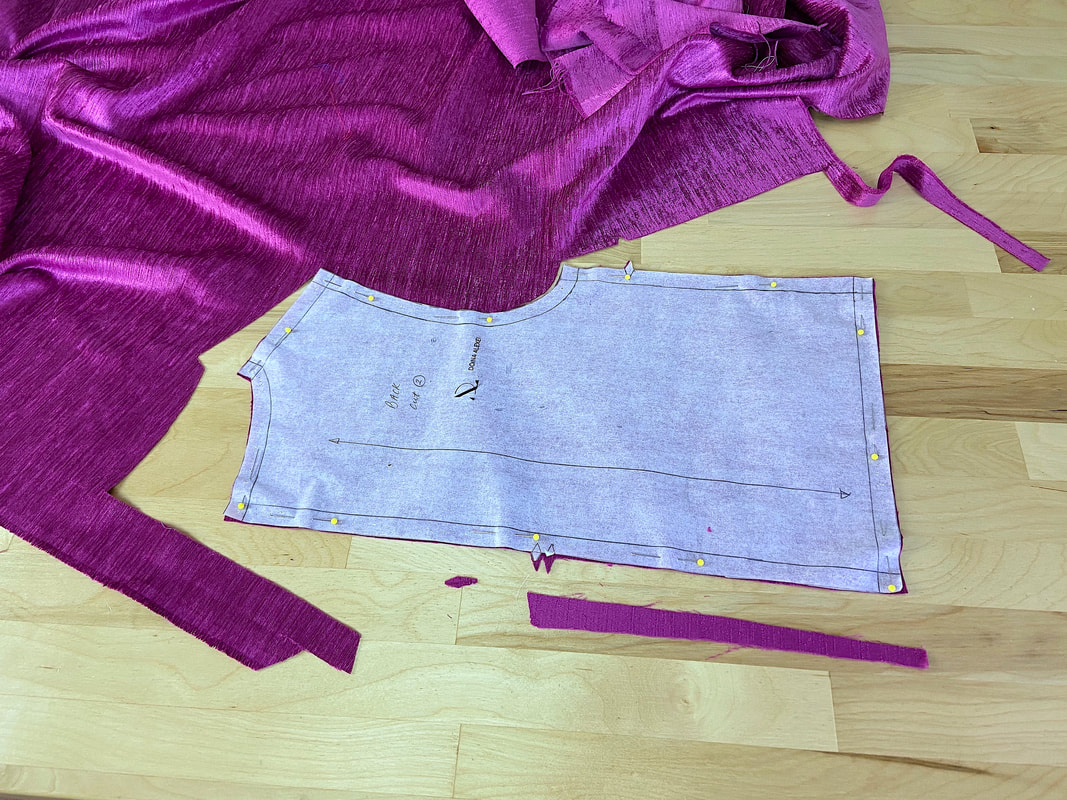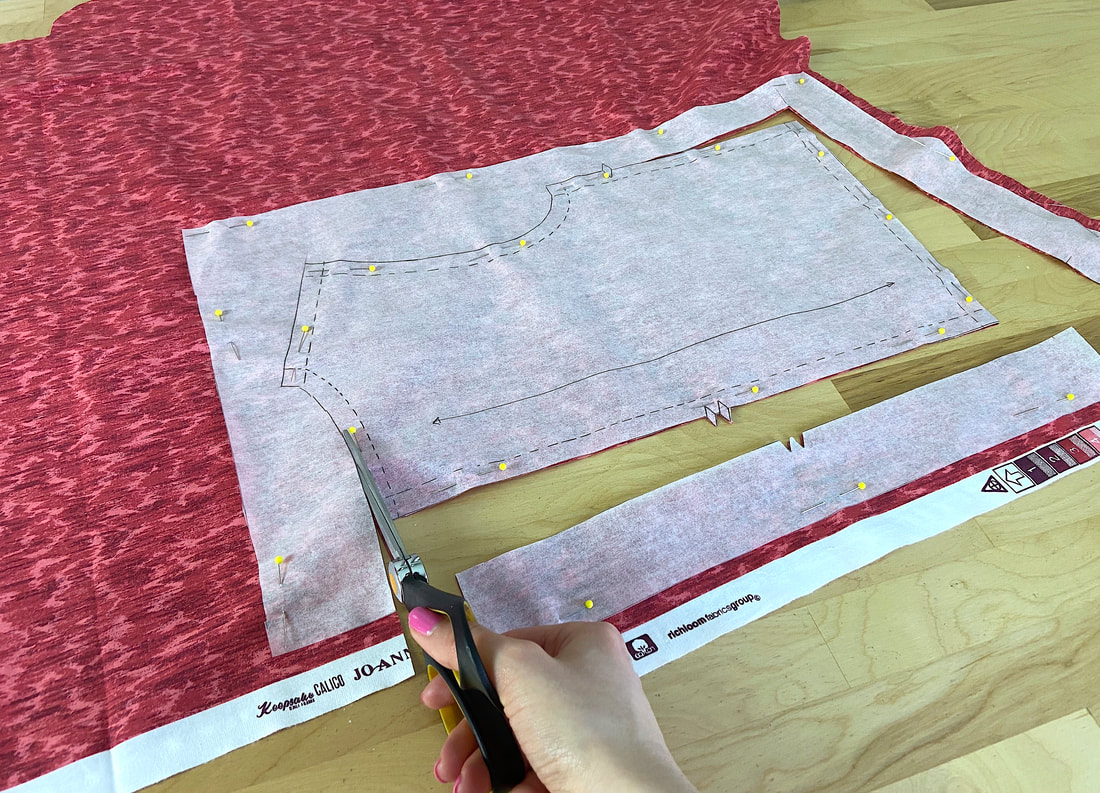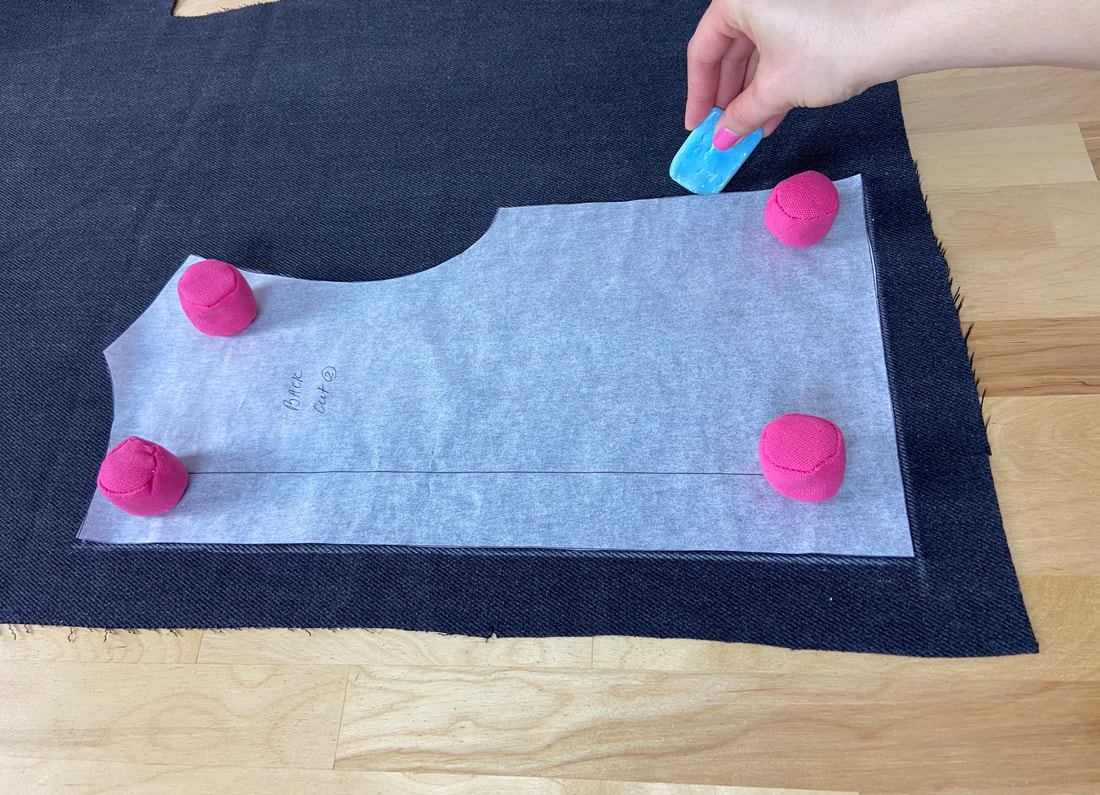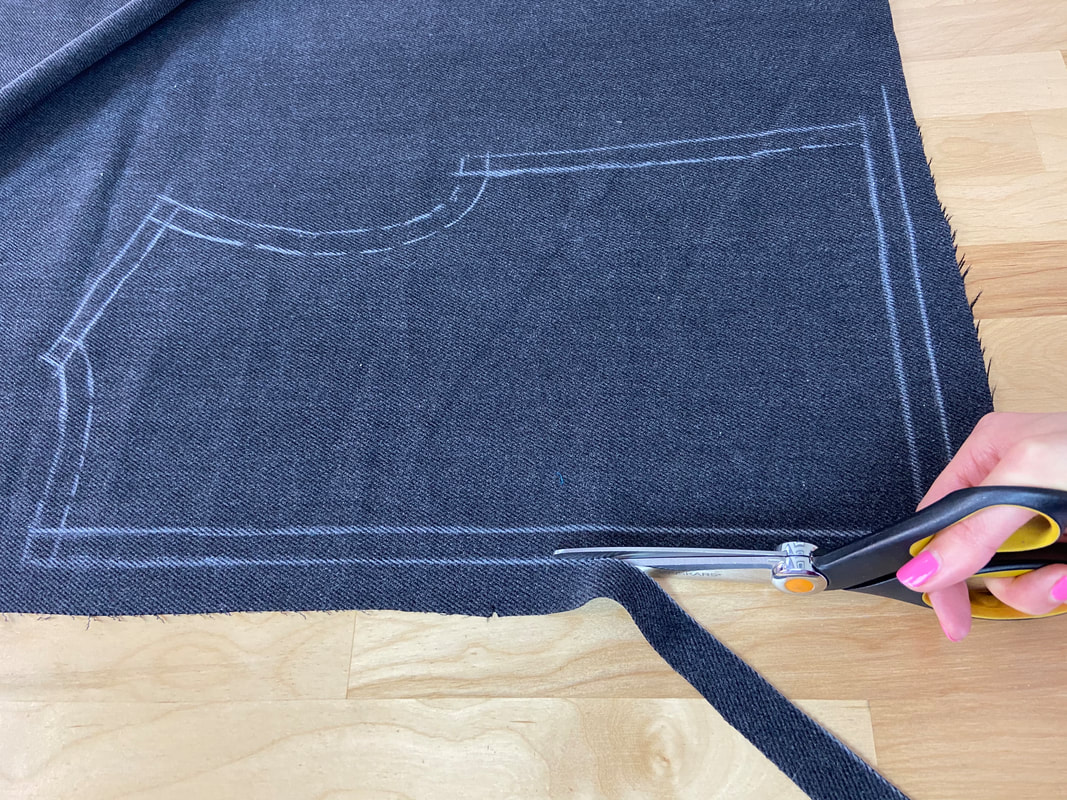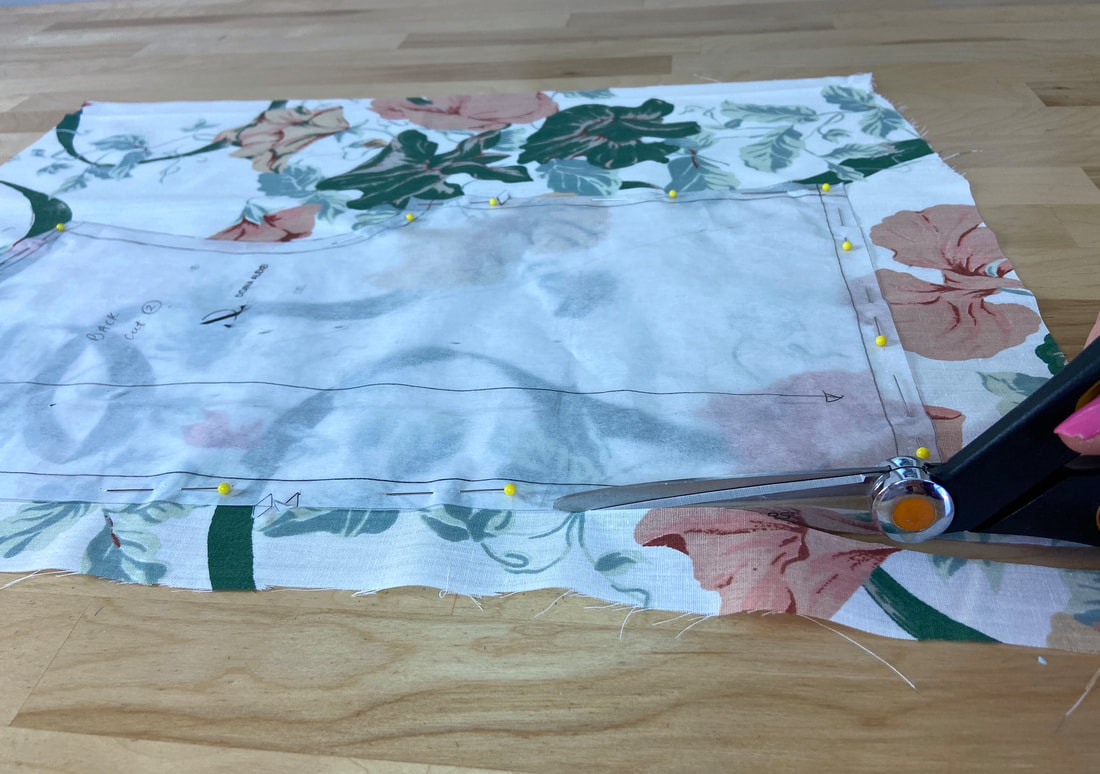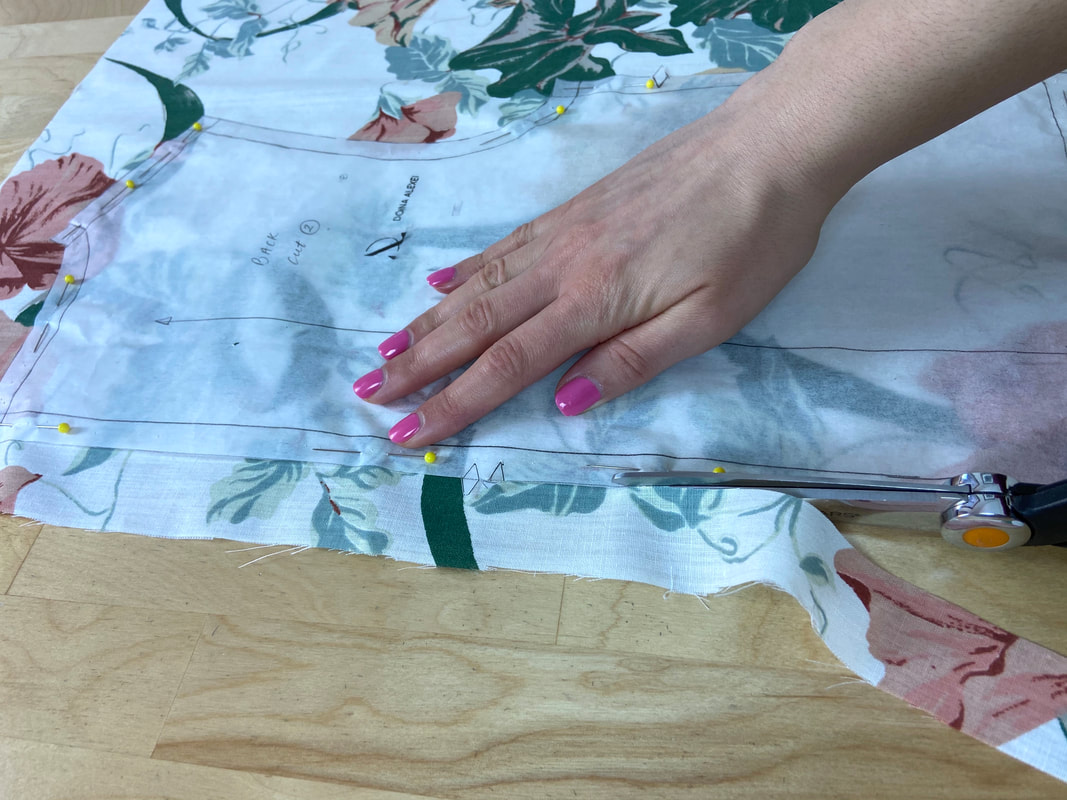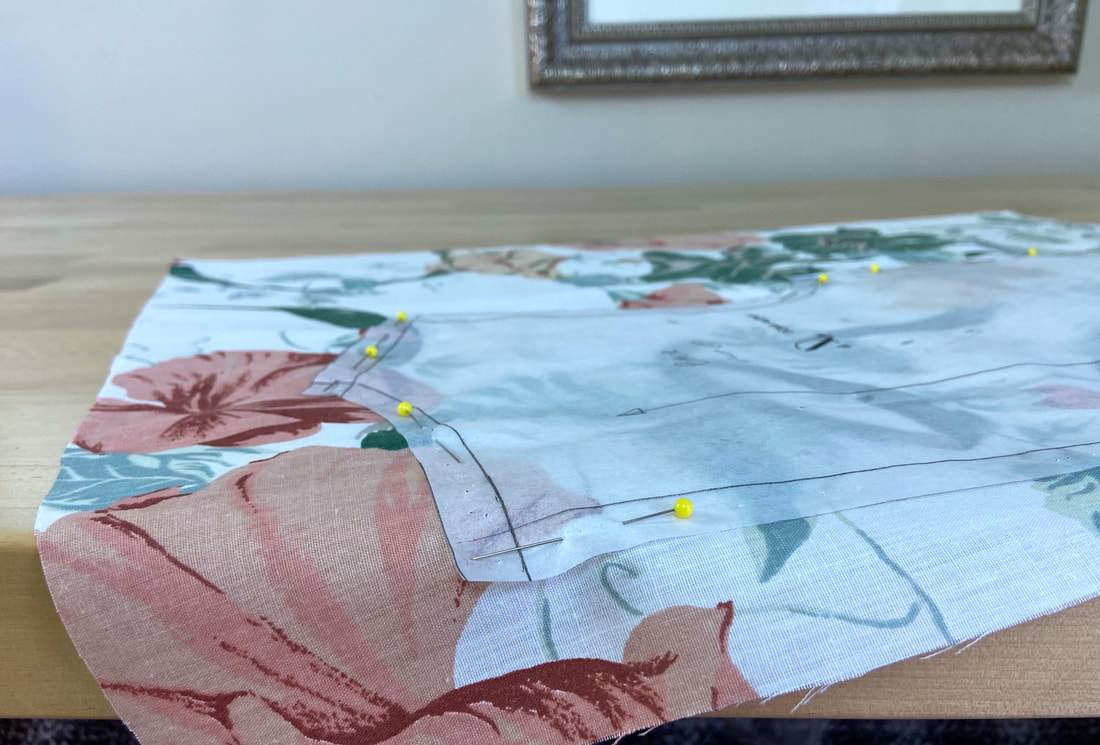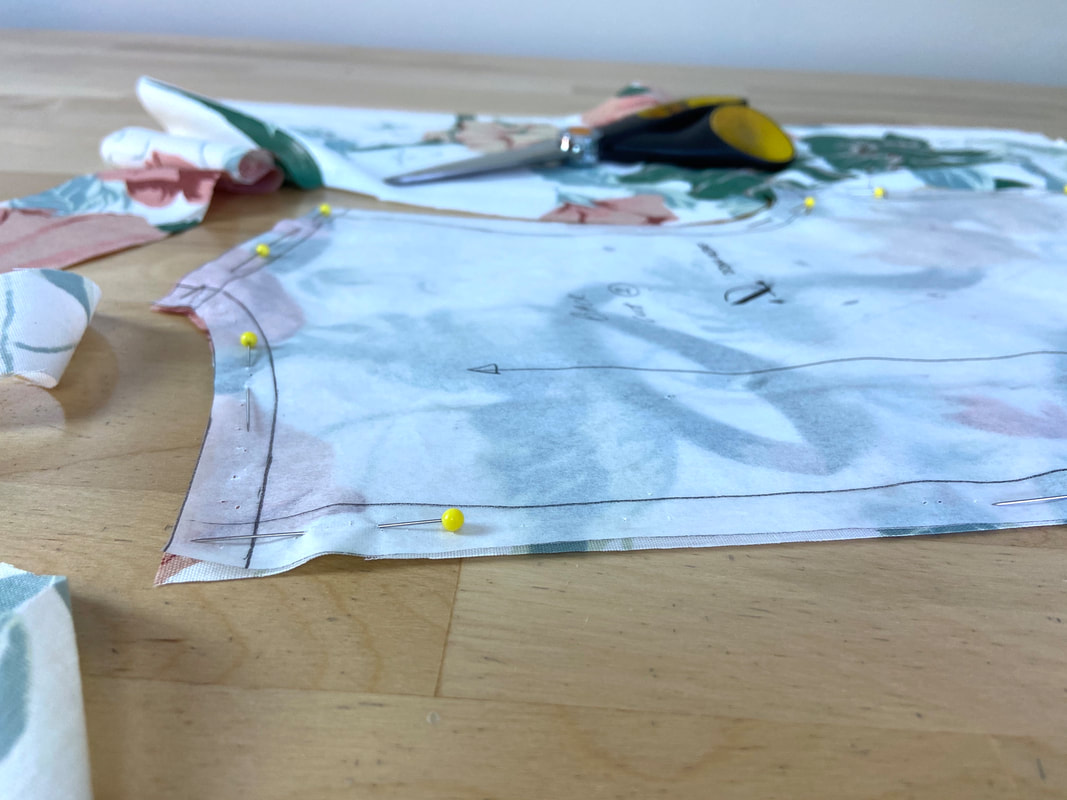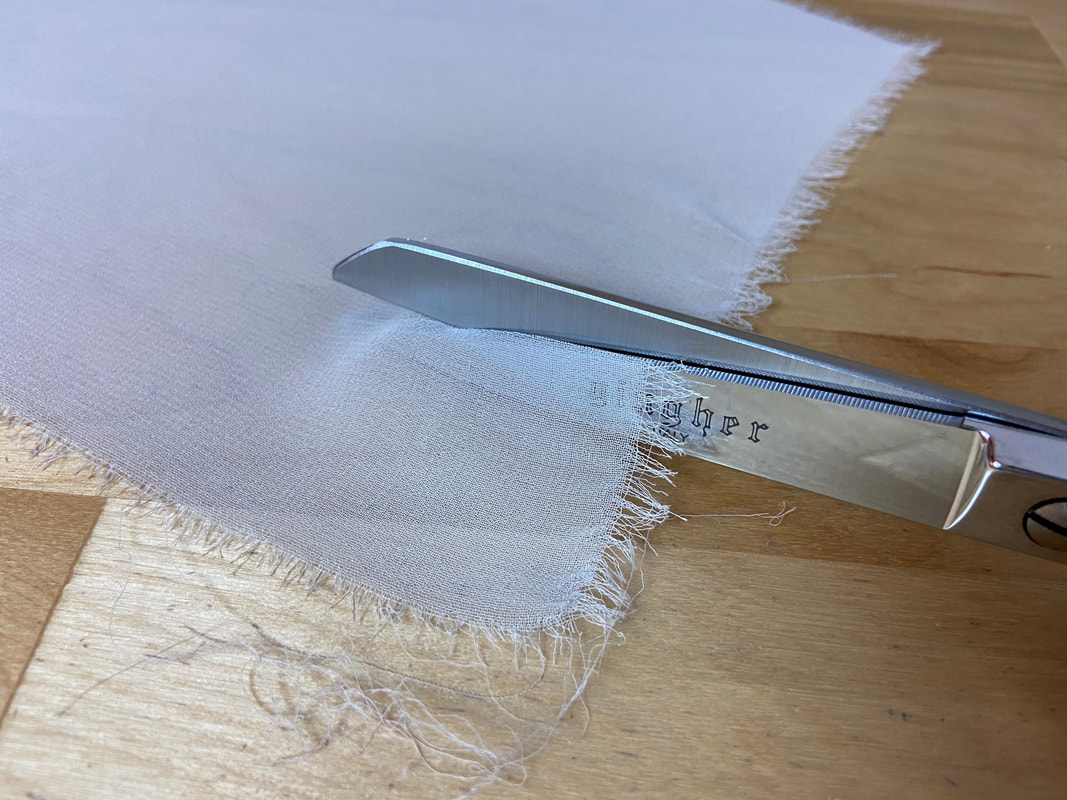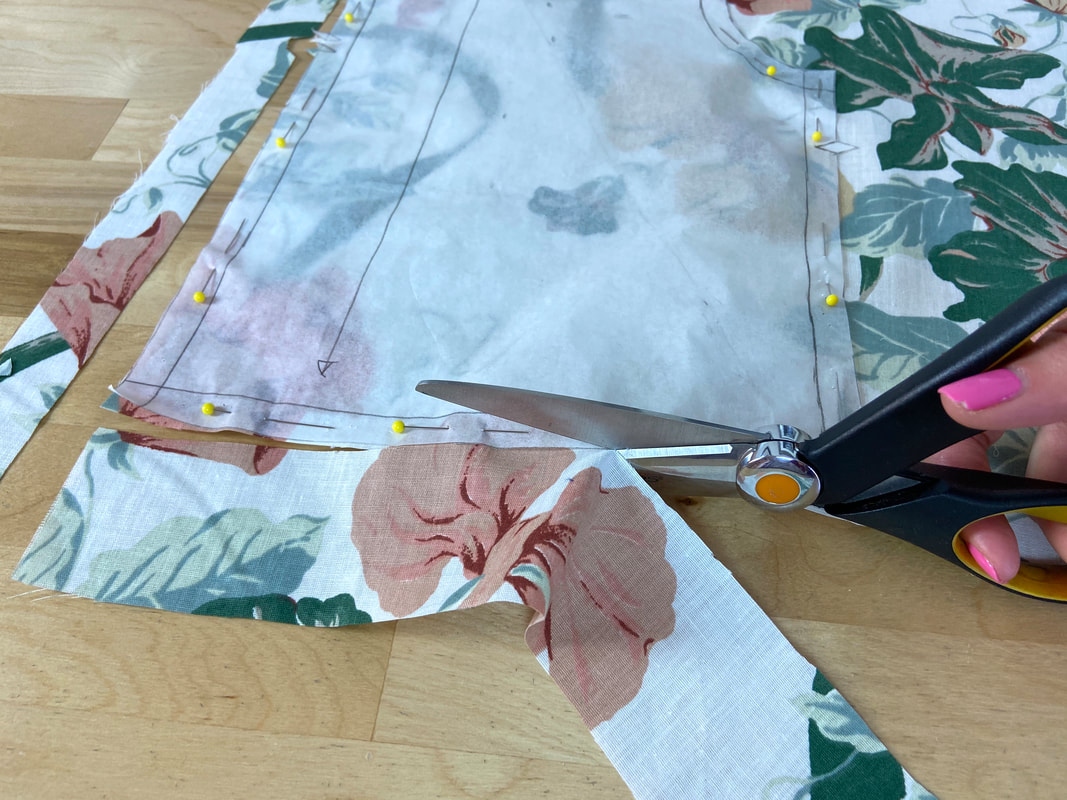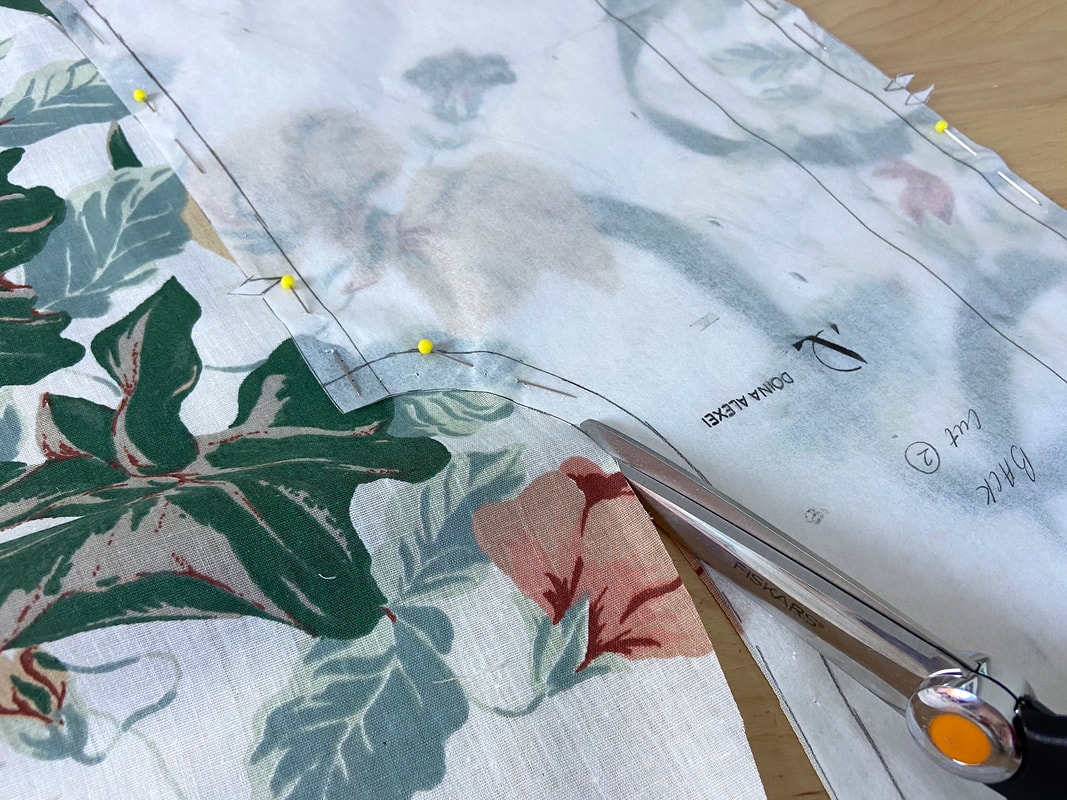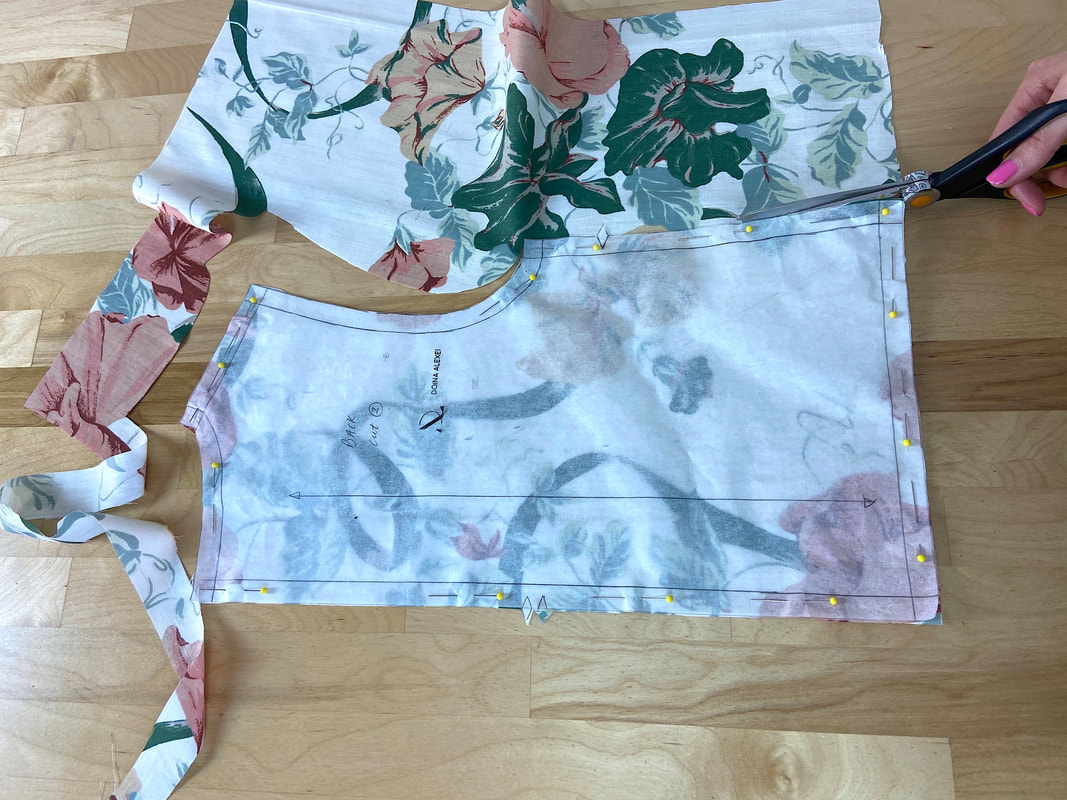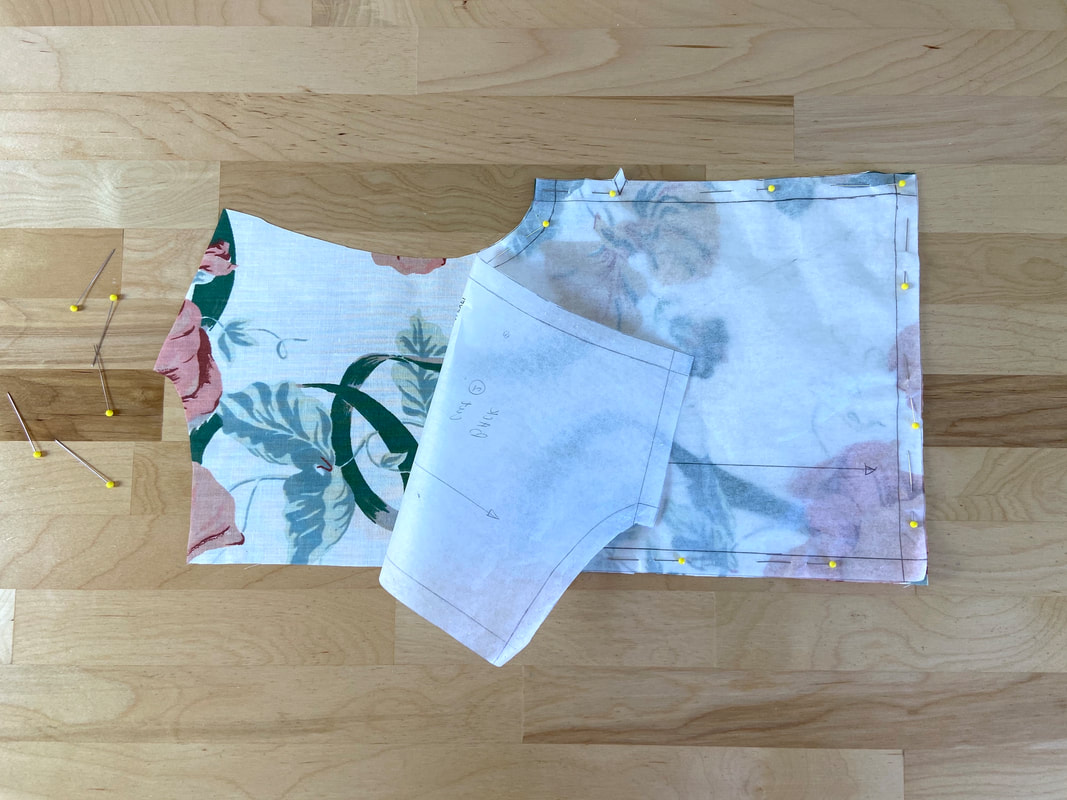Once the sewing patterns have been correctly aligned, pinned or weighted, the fabric is ready to be cut.
Cutting sewing patterns is fairly straightforward, although the process varies based on your sewing patterns, type of fabric used, and how many layers are being cut. Taking these factors and your personal preference into consideration, choose between rotary cutters or fabric scissors to get the job done.
If you are unsure which to use, review this guide for additional info: Rotary Cutters or Fabric Scissors: Which to Use?
When it comes to cutting sewing patterns, practice makes perfect. Over time, you will get the process down to a science!
Let’s start with the sewing patterns. There are three main types of patterns that will determine the cutting process:
Patterns that are cut along the seam allowance edge. This pattern style requires that you follow the pattern edge as you cut through the fabric layer(s).
Think of it as a stencil that you are cutting at exactly the same shape.
Patterns that are cut through paper following specified cut lines. The outer seam allowance edges on these patterns are not trimmed. When cutting, you will cut directly through the paper pattern and fabric layer(s) underneath simultaneously, following designated cut lines. These cut lines correspond to the pattern’s outer seam allowance edges.
Patterns missing seam allowance. These patterns will need to be pinned or weighted onto the fabric surface first, after which seam allowance will be added directly on the fabric using tailors chalk or a fabric pencil. A clear plastic ruler marked down to 1/16th of an inch makes this fairly easy to do.
Once the seam allowance is added, the fabric pieces are cut following these added lines.
Fabric Cutting Rules
Cutting sewing patterns smoothly and efficiently will take some practice and experimentation depending on the fabric, how many layers require to be cut, and the cutting technique used. Nevertheless, the following universal cutting rules should be used regardless of the project at hand:
Rule 1. Always keep fabric as flat as possible in the cutting process. This is often easier to do using rotary cutters, although in this case, the fabric layers will require lots of care when repositioned on top of the cutting mat.
Fabric scissors offer better grip and fabric control, but you should only lift the pinned pattern off the table surface a minimal distance necessary to cut the pattern pieces. Lifting the fabric too much risks shifting the fabric layers in the cutting process.
Rule 2. Keep your free hand on the pinned pattern to ensure the fabric or fabric layers do not shift in the cutting process. This is a simple technique you can use to add some stability and keep the pattern and fabric layers smooth and properly distributed.
Rule 3. Gently shift the pinned pattern if needed but make sure the entire fabric layer or layers are shifted in the same direction. It is common in the cutting process to have to shift the direction of the fabric in order to get a better cutting angle. This should be done very carefully by repositioning the entire fabric layer in accordance with the desired pattern direction.
If your patterns are pinned or weighted on a heavy, long or slippery fabric, exercise extreme caution when shifting everything around. It is advisable that you work on a table that is open from all ends so that you are free to move around it, thus cutting from all angles without having to reposition the fabric-pattern set up.
Rule 4. Don’t let the pinned pattern hang off the table during cutting. When the pattern pieces are not laying completely flat against the fabric layers, the shape of the pattern will not translate onto the cut fabric pieces accurately. For that reason, your pinned patterns should always be laid on a flat surface throughout and never hanging off the edges in the cutting process, regardless of how densely pinned and secured they are.
Rule 5. Always cut on a flat surface, preferably square or rectangular if available. A flat surface is extremely important for achieving maximum transfer accuracy. A flat surface allows the pattern and fabric to lay flush against each other thus leaving less room for cutting errors.
Step 6. Use a good pair of fabric scissors or rotary cutters. Using the right tools is especially important in the pattern cutting process. If the blade on your scissors or rotary cutter needs to be sharpened or replaced, do so, instead of forcing the fabric cut with worn blades.
Cutting with a worn blade will not only distort the fabric edges it may also pull on sensitive threads within the fabric structure or shift the fabric layers out of alignment. Using sharp cutting tools will also be gentle on your hand and wrist resulting in a more enjoyable work process.
Rule 7. Use firm long slashes along straighter edges. Longer cutting strokes result in a much smoother cut and provide more control along straight edges. Of course, a good pair of scissors is necessary to accomplish longer, smoother cuts.
Rule 8. For increased precision, use shorter cutting strokes along curved edges. Shorter cuts allow for more control and grip. If you prefer to use rotary cutters, make sure you change your blade to a smaller diameter. As is true for anytime you cut a pattern, pick up the next cut right where you left the last one to achieve smooth, precise edges with no interruptions.
Rule 9. Cut right next to the pattern edge or directly on top of the pattern’s designated cut lines, keeping all the layers as flat and as smooth as possible in the process.
The resulting fabric cuts should be the identical replica of the pattern pieces in terms of shape, size, and outer edges.

